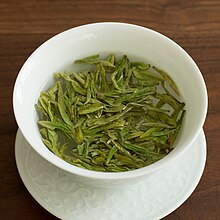**Tea Etymology and Origin**:
– Words for tea reflect history of tea culture transmission
– Cha, chai, and tea categorization
– Introduction of cha and tea to English language
– Origins of tea plant near Irrawaddy River
– Native status of tea plant in East Asia
– Evolution and divergence of Chinese small-leaf and Assam-type tea
– Early tea consumption in ancient East Asia
– Legends of tea invention by Shennong
– Earliest written records and physical evidence of tea in China
**Historical Development of Tea**:
– Techniques for processing tea over centuries
– Tang dynasty’s tea processing methods
– Popularization of loose-leaf tea in Song dynasty
– Processing of unoxidized tea leaves in Yuan and Ming dynasties
– Introduction of oolong tea in the 15th century
**Global Spread of Tea**:
– Introduction of tea to Westerners in China in the 16th century
– Dutch East India Company’s tea shipments
– Russian contact with tea and treaty for supplies
– Spread of tea to various European countries and New York
– Tea’s impact on Russian and English cultures
**Commercial Trade and Culinary Diversity**:
– First recorded shipments of tea by European nations
– Dutch purchase of tea from Japan
– Tea sales in London coffee houses
– Influence of Catherine of Braganza on tea consumption in the British Isles
– Evolution of tea forms and processing techniques
– Western preference for black tea and discovery of yellow tea
**Cultural Impact and Habits**:
– Tea’s popularity in The Hague and introduction to various European countries
– Tea’s national beverage status in Russia
– Historical mentions of tea in English and introduction to the English court
– Development of tea-drinking habits across different cultures and regions
Tea, or cha, is an aromatic beverage prepared by pouring hot or boiling water over cured or fresh leaves of Camellia sinensis, an evergreen shrub native to East Asia which probably originated in the borderlands of southwestern China and northern Myanmar. Tea is also made, but rarely, from the leaves of Camellia taliensis. After plain water, tea is the most widely consumed drink in the world. There are many different types of tea; some have a cooling, slightly bitter, and astringent flavour, while others have profiles that include sweet, nutty, floral, or grassy notes. Tea has a stimulating effect in humans, primarily due to its caffeine content.
 | |
| Type | Hot or cold beverage |
|---|---|
| Country of origin | China |
| Introduced | First recorded in China in 59 BC, though probably originated earlier |
An early credible record of tea drinking dates to the third century AD, in a medical text written by Chinese physician Hua Tuo. It was popularised as a recreational drink during the Chinese Tang dynasty, and tea drinking subsequently spread to other East Asian countries. Portuguese priests and merchants introduced it to Europe during the 16th century. During the 17th century, drinking tea became fashionable among the English, who started to plant tea on a large scale in British India.
The term herbal tea refers to drinks not made from Camellia sinensis. They are the infusions of fruit, leaves, or other plant parts, such as steeps of rosehip, chamomile, or rooibos. These may be called tisanes or herbal infusions to prevent confusion with tea made from the tea plant.
